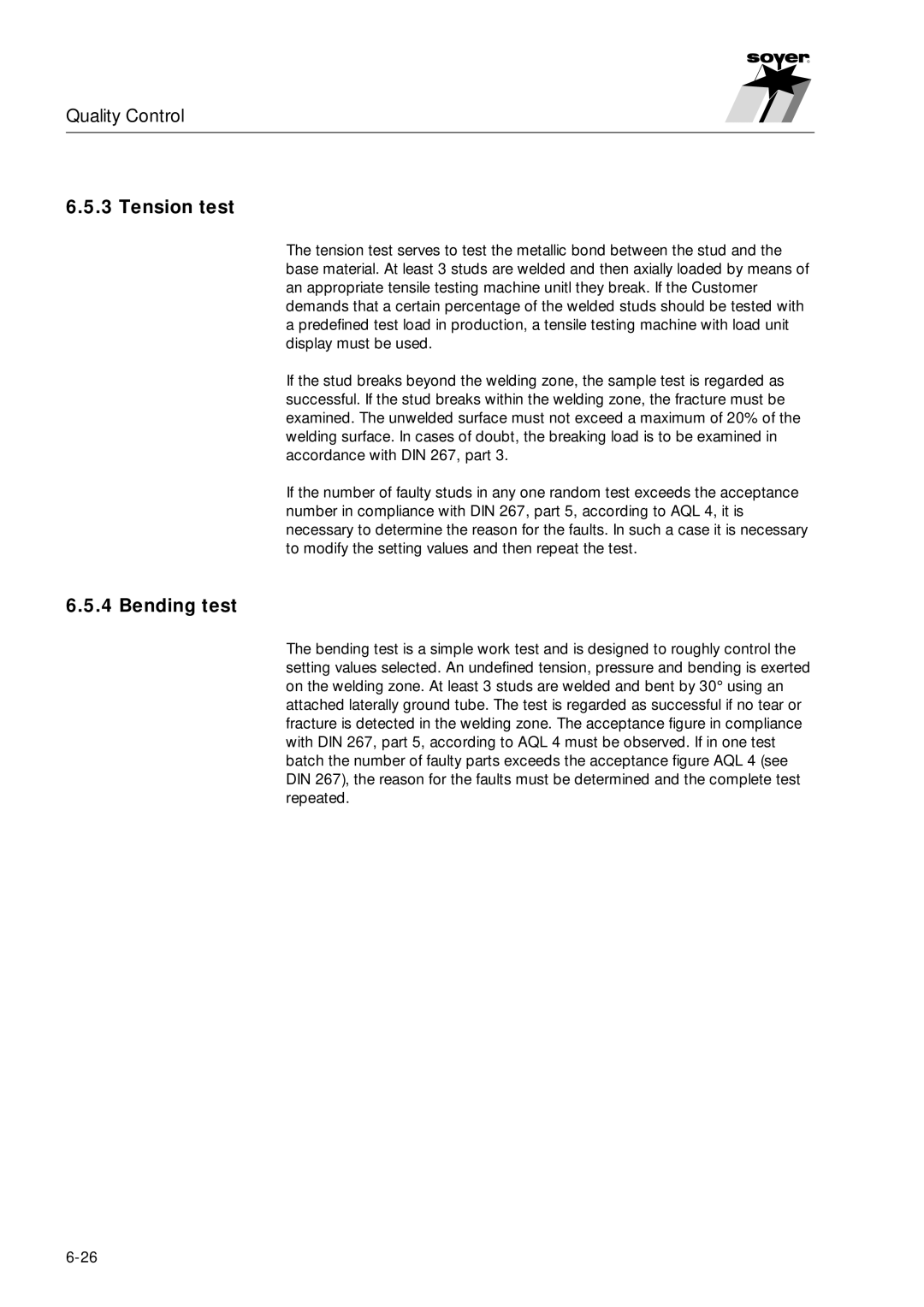
R
Quality Control
6.5.3 Tension test
The tension test serves to test the metallic bond between the stud and the base material. At least 3 studs are welded and then axially loaded by means of an appropriate tensile testing machine unitl they break. If the Customer demands that a certain percentage of the welded studs should be tested with a predefined test load in production, a tensile testing machine with load unit display must be used.
If the stud breaks beyond the welding zone, the sample test is regarded as successful. If the stud breaks within the welding zone, the fracture must be examined. The unwelded surface must not exceed a maximum of 20% of the welding surface. In cases of doubt, the breaking load is to be examined in accordance with DIN 267, part 3.
If the number of faulty studs in any one random test exceeds the acceptance number in compliance with DIN 267, part 5, according to AQL 4, it is necessary to determine the reason for the faults. In such a case it is necessary to modify the setting values and then repeat the test.
6.5.4 Bending test
The bending test is a simple work test and is designed to roughly control the setting values selected. An undefined tension, pressure and bending is exerted on the welding zone. At least 3 studs are welded and bent by 30° using an attached laterally ground tube. The test is regarded as successful if no tear or fracture is detected in the welding zone. The acceptance figure in compliance with DIN 267, part 5, according to AQL 4 must be observed. If in one test batch the number of faulty parts exceeds the acceptance figure AQL 4 (see DIN 267), the reason for the faults must be determined and the complete test repeated.
